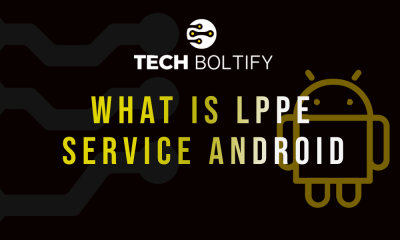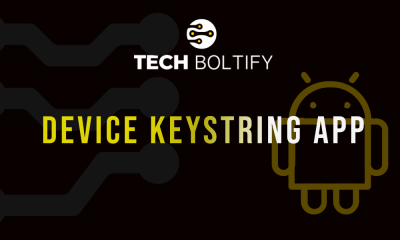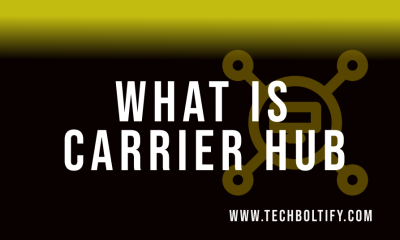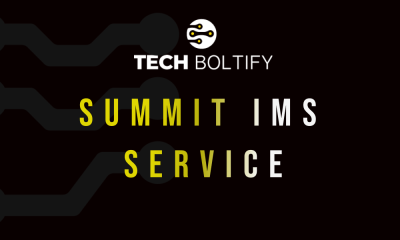Tech
What’s Next? The Future of AI and Robotics in Pre-Roll Manufacturing
The cannabis industry is evolving, and pre roll manufacturing is no exception to the trend. It is also becoming more efficient, precise, and scalable with the help of AI and robotics and other advanced technologies. Join us as we examine the future of the pre roll manufacturing world and discover the miracles of technology, with fully automated pre roll manufacturing machines, ultra fast grinders, and other advancements that will completely rewrite the rules of pre roll production (we’re talking about the theoretical ways of making 1000 prerolls with a 5 person team in < 15 min)
The Current State of Pre-Roll Manufacturing
Before we leap forward, it’s crucial to understand the landscape of pre roll manufacturing as it exists today. Pre rolled joints have generally been made one at a time, with workers rolling cannabis into tubes or cones. Although there are pre roll machines that help with this process, a large part of the production is still labor-intensive, which constrains scale and consistency.
But as the appetite for pre rolled joints skyrockets, producers are increasingly automating operations to keep pace with the demand. Automation will make the process faster, more accurate, and less dependent on human labor.
How Automation is Transforming Manufacturing of Prerolls
Benefits of Automation in pre roll manufacturing:
- Improved Efficiency: Automated systems are capable of generating pre rolled joints at significantly higher rates than manual labor, enabling manufacturers to rapidly scale production.
- Consistency and Quality: Machines can make sure that every pre roll has the same weight, size, and shape, leading to improved product consistency and quality.
- Cost Savings: If you automate processes with the right technology, the use of manual labor can be reduced, leading to cost savings in the long run.
- Quicker Turnaround Times: Automation also helps speed up the production process, allowing products to reach the market more quickly.
With advancements in technology, we have newer such systems being developed which are more effective and efficient compared to previous ones.
Fully Automatic Pre Roll Machines Are Now… The Future
The rise of fully automated pre roll machines are an innovation in pre-roll manufacturing. They are so advanced that they can process everything from your cannabis, filling your cones, and packaging the finished pre rolled joints. With the benefit of AI and robotics, these machines can produce prerolls at unheard of speeds with 99% accuracy.
How Fully Automated Pre Roll Machines Operate
Some common features of fully automated pre roll machines include:
- Automated Grinding: An ultra fast grinder processes the cannabis, applying quick, uniform pressure that grinds the product to the exact consistency required for rolling.
- Process of Filling or Rolling: The shredded cannabis automatically fills in pre-formed cones or rolled papers.
- Packing & Labeling: The completed pre rolled joints are packed, labeled and prepared for distribution, all without human intervention.
With a fully automated pre roll machine, manufacturers are able to produce as many pre rolls as they want in a fraction of the time needed through traditional means.
Advantages of Fully Automated Pre Roll Machines
- Efficiency: These machines efficiently produce goods, whether small-batch or mass production.
- Speed: Automated pre roll machines are much quicker than manual processes, boosting overall output and reducing turnaround time.
- Precision: Each pre roll is the same in weight, size, and quality because of automation which leads to a more uniform product.
- Cost Efficiency: Automating much of the process, these machines offer the potential for production costs to drive down over time so that manufacturers can reinvest in their business.
Best Automatic Pre Roll Machine for Mass Production
Automated pre roll machines come with a variety of features that companies must evaluate including speed, reliability and level of automation. Some machines are more appropriate for large-scale manufacturing, while others are perfect for smaller setups. To summarize, the best automated pre roll machine is designed to maximize production while minimizing labor and providing a uniform product at a competitive cost.
These are just a fraction of the highest-rated machines available on the market today, and some of them are even integrated machines that are not only mining, but the process is smoother thanks to advanced AI and robotics. Machines that can tackle high throughput of per-rolls with little to no down time for a seamless manufacturing experience.
Ultra Fast Grinders: Unlocking Speed and Precision
The grinder is one of the most important features in every automated system for pre roll manufacturing. The Ultra-fast grinder is made to grind cannabis up quickly and with precision to the right consistency for roll-up This is an important step, as the grind quality also affects the quality of the finished prerolls.
Features for Grinders
- Precision Grinding: These units achieve a uniform grinding size that guarantees an even burn with a smooth smoking experience for its consumers.
- Hence your drops into the grinder and shake them until the dust is formed, which is good for speed: the ultra fast grinders are able to accommodate considerable amounts of cannabis in a comparatively short period; the entire manufacturing process will enhance speed significantly.
- Automation: Ultra fast grinders are often fully automatic, minimizing the training time required and providing better consistency.
Ultra fast grinders can ensure that grinding does not become a bottleneck in the production process in a pre roll manufacturer. As noted previously, these form the foundation of any automated pre roll system, essentially the glorified equivalent of high-quality bud.
Using Robotics in Pre Roll Manufacturing
They are already being used to assist with pre roll manufacturing for:
- Cannabis Movement: With high accuracy, robots can move cannabis between different stations.
- Weighing, Rolling, and Filling: Robotics can assist in weighing cones and in the rolling process to ensure distributed cannabis.
- Packaging: Robotics can also take care of the packaging process for pre rolled joints, including sealing, labeling, and boxing.
The advancement of robotic systems will continue, and will likely have an ever-increasing place in the pre roll manufacturing process, providing both flexibility and efficiency.
Cigarette Rolling Machines: A Gateway to Automation
Rolling machines have been utilized for years in tobacco production, but are now finding new life in cannabis. Similar to a cigarette rolling machine, the best joint rolling machines crank out pre rolled joints with consistent shape and size.
Cigarette-making machines are primarily designed for the tobacco industry, but their technology has a way of being easily adapted to the cannabis industry. They are an essential step toward fully automated pre roll production.
The Role of Cigarette Rolling Machines in the Pre Roll Production Process
- Faster Production Turnaround: With cigarette rolling machines, pre rolls can be produced in less time than the manually made methods.
- Uniformity: These machines can create consistent size and shape, which are essential for quality control.
- Customization: Today’s cigarette rolling machines can accommodate customization, which allows manufacturers to customize the density and consistency of the rolls.
Cigarette rolling machines in pre roll manufacturing can provide a more homogeneous and systematic process.
The Future is Automated
The future of pre roll manufacturing is brilliant as artificial intelligence, robotics, and automation will be at the forefront in the evolution of the industry. Fully automated pre roll machines, ultra-rapid grinders, and robotic systems are taking the production of these crushed, compacted cannabis blunts to a level of speed, efficiency, and uniformity never seen before.
With the continuing evolution of technology, the pre rolled joint market will see more modern alternatives that will allow manufacturers to ramp up production time and meet demand. The integration of AI and robotics into the pre roll manufacturing process signifies a monumental step up in efficiency, precision, and quality—so that the future of cannabis consumption will be as seamless as the pre roll itself.
Tech
5 Best Embedded Analytics Platforms
Embedded analytics means integrating dashboards, reports, and visualizations directly into your software product. Instead of switching to external BI tools or exporting data into spreadsheets, users get insights in context right where decisions are made.
For SaaS companies, embedded analytics has moved from a “nice-to-have” to a core product capability. It enhances user experience, drives retention, unlocks monetization opportunities, and alleviates the load on your development team. However, not all embedded analytics platforms are built the same, and the wrong choice can result in bloated integrations, confusing pricing, or poor adoption.
This list focuses on the top five embedded analytics platforms in 2025 based on developer flexibility, product fit, scalability, and real-world value. Whether you’re evaluating your first analytics vendor or replacing legacy BI, these are the tools worth looking at.
Reveal Overview
Reveal is a developer-focused embedded analytics platform designed specifically for SaaS and ISV products. Unlike traditional BI tools that offer limited embedding through iFrames, Reveal provides native SDKs that integrate directly into your application’s codebase. This approach gives teams complete control over the user experience, branding, and dashboard behavior—making analytics feel like a seamless part of the product, not an external add-on.
Reveal is also one of the few platforms with flat, transparent pricing. It avoids the per-user, per-report, or data-volume-based fees common to legacy BI tools. That makes it easier to forecast costs and scale analytics alongside your product without penalty.
Strengths
- Native SDKs (not iFrames): Available for .NET, JavaScript, React, Angular, and more—delivers real integration and interactivity
- Full white-labeling: Customize logos, colors, layouts, and interactions to fully match your product’s UI
- Flat pricing: One predictable fee, no matter how many users or dashboards you support
- Self-service dashboard creation: Non-technical users can build and edit dashboards without relying on dev resources
- Flexible deployment: Supports cloud, on-prem, or hybrid models depending on infrastructure and compliance needs
Best For
SaaS product teams and ISVs that want fast time-to-market, complete UI control, and cost predictability. Ideal for teams embedding analytics into customer-facing apps where seamless UX and real-time data access matter.
Limitations
Reveal isn’t a general-purpose BI platform. It’s optimized for product embedding, not for internal business intelligence or standalone reporting dashboards across departments.
GoodData
GoodData is a composable analytics platform built for complex, multi-tenant environments. It’s geared toward developers and enterprise data teams who need complete control over how analytics are delivered, secured, and customized. Its headless architecture allows teams to build fully custom front ends, using a GraphQL API to query and present data however they choose.
GoodData is especially strong in data governance and scalability. It supports large-scale deployments with strict data control requirements, and integrates with modern data stacks without forcing a single rigid workflow.
Strengths
- Headless, API-first architecture: Use GraphQL to deliver analytics via custom front ends or existing UI frameworks
- Built for multi-tenancy: Designed to support embedded analytics across many customers or departments, with strict data isolation
- Enterprise-grade governance: Fine-grained access controls, versioning, and audit trails built for compliance-heavy use cases
- Flexible deployment: Can be run in the cloud or self-hosted, with strong Kubernetes support for complex environments
- Scales with your data: Optimized for distributed, high-volume data environments
Best For
Enterprises or platform teams managing complex data pipelines across multiple tenants. Ideal for those who need to control every layer of the analytics stack—from data modeling to UI delivery.
Limitations
The architecture assumes strong engineering resources. For teams unfamiliar with headless BI or GraphQL, the setup and customization process can require a steep ramp-up.
Looker (by Google Cloud)
Overview
Looker is a well-established enterprise BI platform known for its semantic modeling layer, LookML, and deep integration with the Google Cloud ecosystem. While not designed specifically for embedding, it offers APIs that allow teams to surface analytics in external applications with some customization.
Looker’s main appeal lies in its centralized data governance and reusable data models. For teams that prioritize consistency across reports and dashboards, especially within large data teams or cross-functional environments, Looker provides structure and scale.
Strengths
- LookML modeling layer: Enables centralized, reusable definitions of metrics, dimensions, and logic
- Robust API access: REST and SDK-based APIs allow programmatic dashboard delivery and data queries
- Native to Google Cloud: Integrates tightly with BigQuery and other GCP services for fast performance and scalability
- Strong governance: Version control, permissions, and approval workflows support enterprise needs
- Interactive dashboards: Supports filtering, drill-downs, and custom visualizations
Best For
Enterprise organizations already using Google Cloud that want governed, reusable analytics models across multiple teams and use cases.
Limitations
Looker is not SDK-based, and embedding is done through iframes or API workarounds. Customization and white-labeling are limited compared to platforms built specifically for embedding inside SaaS products.
Sisense – Overview
Sisense is an embedded analytics platform focused on extensibility and developer control. It provides a flexible architecture that lets engineering teams tailor analytics to fit a wide range of product and user requirements. Sisense supports embedding via JavaScript libraries, REST APIs, and web components, allowing for custom UI integration and interactive dashboards within web applications.
Its back-end architecture can handle large, complex data pipelines, making it suitable for enterprise-grade use cases. Sisense also supports a wide range of deployment models, including cloud, hybrid, and on-prem, which is valuable for teams with specific compliance or infrastructure needs.
Strengths
- Extensive API toolkit and plugin framework: Customize functionality, visualizations, and workflows
- Flexible embedding methods: Use JavaScript, REST APIs, or web components depending on stack
- Scales with complexity: Handles high-volume data environments and multi-source pipelines
- Deployment flexibility: Supports cloud, hybrid, and on-prem use cases for compliance-driven teams
- Developer-friendly: Built for teams with engineering resources to create custom analytics experiences
Best For
Engineering-led teams that need advanced customization across diverse products, use cases, or customer segments.
Limitations
Sisense pricing is usage-based and can become expensive at scale. Teams embedding into fast-growing SaaS products may need to plan carefully for long-term cost and licensing structures.
Logi Analytics (by Insightsoftware) – Overview
Logi Analytics is a long-standing player in the embedded analytics space, known for its deep integration capabilities—especially in .NET and legacy environments. It’s designed for teams that want to add analytics to existing apps without rebuilding their tech stack. Logi supports strong white-labeling and flexible customization, making it a practical fit for internal tools or customer-facing apps that need retrofitted analytics.
Strengths
- Optimized for legacy stacks: Embeds cleanly into .NET and older enterprise systems
- White-label and brand customization: Adapt analytics to match your existing UI
- Custom workflow support: Tailor interactivity and logic based on user roles or actions
- Flexible user model: Works for both internal teams and external customers
Best For
Organizations modernizing older applications that need to integrate analytics without rewriting their front end or moving off legacy infrastructure.
Limitations
Since being acquired by Insightsoftware, innovation has slowed. Some users report performance issues when dealing with complex views or large-scale deployments.
Choosing the Right Embedded Analytics Platform
The best embedded analytics platform isn’t the one with the most features—it’s the one that fits your product. You need something that integrates directly into your app, matches your UI, performs in real time, and scales without surprise costs or added dev work.
If you’re embedding analytics into a customer-facing product, prioritize:
- SDK-based integration (not iFrames)
- Full control over branding and layout
- Real-time data performance
- Transparent, predictable pricing
Whether you’re launching analytics for the first time or replacing a rigid BI tool, these five platforms are the top options to consider in 2025.
Tech
Best Payment Gateway for Marketplace: What to Look For
Marketplaces need payment systems that do more than just process transactions. You’re not just selling one product—you’re connecting buyers and multiple sellers. That means more complexity, more compliance, and a bigger need for flexibility. So, what’s the best payment gateway for marketplace businesses?
In this guide, we break down the features to look for, the common pain points, and how to evaluate different options based on your needs.
What Is a Marketplace Payment Gateway?
A payment gateway for a marketplace is a bit more difficult that a standard e-commerce gateway. The nuance is that marketplace payment systems must let multiple vendors accept payments through a single checkout. It also must split those payments—automatically or manually—and it must have an efficient payout feature to ensure each party gets their fair share.
But the best payment gateway for marketplace operations should do more than process payments. It should help you:
- Stay compliant with financial regulations
- Manage payouts to sellers
- Handle refunds and disputes
- Track and report transactions across vendors
Key Features of the Best Payment Gateway for Marketplaces
Multi-Vendor Support
Running a marketplace means handling a wide range of sellers—sole traders, SMEs, and sometimes even large brands. Your payment system needs to support flexible, scalable onboarding that works for all of them.
This includes thorough KYC (Know Your Customer) or KYB (Know Your Business) checks, generating unique account IDs for accurate tracking, and handling region-specific tax requirements. Ideally, much of this should be automated to reduce friction for both you and your sellers while staying compliant.
Split Payments
Splitting a single payment between multiple recipients is not just a nice-to-have—it’s essential for marketplace operations. Whether you’re taking a fixed commission, a dynamic cut, or distributing funds to additional service providers (like delivery partners or charities), your payment gateway should support this natively.
Look for tools that let you configure flexible payout logic—either predefined or based on transaction data. Manual workarounds or after-the-fact calculations won’t scale and open the door to errors or trust issues.
Fast Payouts
Timely payouts build trust. Sellers—especially individuals or gig workers—expect to receive their earnings quickly and predictably. Your payment gateway should offer options for daily, weekly, or on-demand settlement, ideally with support for instant payouts where available.
Transparent payout timelines and status tracking can help reduce support queries and increase seller satisfaction, which in turn benefits the overall health of your platform.
Flexible Payment Methods
A diverse buyer base comes with a wide range of preferences, especially in international markets. Your checkout should support a mix of payment methods to meet users where they are. This includes cards, bank transfers, digital wallets, and local payment methods popular in specific regions. Increasingly, pay-by-bank (A2A) options are gaining traction for their speed and low cost.
Offering multiple payment rails improves conversion and signals reliability across different customer segments.
No-Code or Low-Code Tools
Not every marketplace has a large dev team. In that case, access to ready-made, flexible integration options becomes crucial. Look for payment providers that offer no-code or low-code tools such as hosted checkouts, plug-and-play SDKs, or embeddable payment links.
These allow you to get up and running quickly, reduce development overhead, and still provide a smooth user experience—especially helpful for newer platforms or side projects.
Onboarding and Compliance Tools
Regulatory compliance can be complex and time-consuming, particularly when onboarding vendors across multiple jurisdictions. The right payment gateway will handle much of this behind the scenes—automating anti-money laundering (AML) checks, flagging suspicious activity, and keeping accurate records for audit purposes.
Bonus points for dashboards that help you monitor onboarding progress, generate compliance reports, and reduce manual intervention.
Dispute Management
Disputes in marketplaces are more complicated than in single-merchant models, since both the buyer and seller have a stake in the outcome.
Look for payment systems that offer marketplace-specific features: the ability to issue refunds from seller balances, share chargeback liability based on predefined rules, and manage disputes through a dedicated dashboard. Clear, transparent processes protect everyone involved and prevent minor issues from escalating.
Benefits of Choosing the Right Gateway
- Lower Operational Costs: Manual tasks like reconciliation, KYC checks, and payout tracking can drain time and resources. A smart, automated payment system lightens the load and cuts costs.
- Better Vendor Retention: Reliable, timely payouts build trust. When sellers know they’ll be paid on time and can access clear reports, they’re more likely to stay and grow with your platform.
- Improved Customer Experience: A seamless checkout process—especially one that supports local methods and mobile-first design—leads to higher conversion rates and fewer abandoned carts.
- Scalability: The right gateway grows with you. Whether you’re onboarding 10 vendors or 10,000, it should support increasing complexity without requiring constant manual oversight.
Evaluating the Best Payment Gateway for Marketplace
Here’s what to check when choosing a provider:
| Feature | Why It Matters |
| Multi-currency support | For international buyers and sellers |
| Local payment methods | For better regional conversion |
| Instant payout options | Improves vendor loyalty |
| Automated tax tools | Saves time and ensures compliance |
| API + dashboard access | Combines flexibility with ease-of-use |
| Open banking integrations | Reduces fees, supports pay-by-bank flows |
| Support and SLAs | Essential if something breaks |
Why Pay-by-Bank Matters for Marketplaces
Pay-by-bank is an innovative payment method that’s rapidly gaining ground—particularly in Europe. For marketplaces, it offers a compelling combination of lower fees, faster settlement, and stronger security compared to traditional card payments.
One of its biggest advantages is the potential for instant payments and payouts, which is especially valuable in multi-vendor environments. This payment method became viable with the introduction of open banking, which allows businesses to process direct bank-to-bank transactions within their websites or apps—completely bypassing card networks.
Open banking was introduced in Europe in 2018 under the PSD2 regulation. It required major banks to open up secure APIs to licensed third parties, enabling access to payment infrastructure and customer data (with consent). This regulatory shift unlocked a wave of fintech innovation, making efficient, low-friction payment methods like pay-by-bank possible at scale.
Getting Started with a Marketplace Payment Gateway
You don’t need to overhaul your entire platform to begin offering pay-by-bank. Many modern payment providers are designed with flexibility in mind, making integration smoother than you might expect. Look for options such as:
- Hosted checkouts that handle the payment flow for you, with minimal setup
- Plug-and-play integrations for popular platforms and marketplaces
- Clear API documentation for more custom setups
- Sandbox environments so you can test everything before going live
Start with a limited rollout—perhaps a single product line or a few vendors—to see how the system performs. As you gain confidence, you can expand gradually, reducing risk while scaling effectively.
Final Thoughts
The best payment gateway for marketplace businesses isn’t just about processing payments. It’s about supporting your ecosystem—buyers, sellers, and your team.
Look for something flexible, secure, and scalable. Make sure it handles split payments well, supports pay-by-bank, and fits your region’s legal and banking frameworks.
If you want fewer support tickets, happier sellers, and smoother checkouts—your payment gateway choice will make all the difference.
Tech
Chargebacks and Friendly Fraud: The Hidden Cost Marketers Keep Ignoring
Hyper-focused on conversions, ROI, and audience segmentation are on the rise, and a silent profit killer is, in most cases, unnoticed: chargebacks and friendly fraud.
We could easily agree that ad budgets receive all the attention, but what happens after the sale, when a customer disputes a legitimate transaction, can be just as important to long-term revenue, in fact, for many eCommerce businesses, SaaS providers, and subscription platforms, chargebacks are quietly merging into margins and trust that marketing teams often miss.
Marketers may unintentionally, without recognizing it themselves, create the problem.
Let’s break down how chargebacks and friendly fraud work, why they matter more than most marketers realize, and how tools like authentication and modern ID verification services can mitigate losses and protect both reputation and revenue.
Understanding Chargebacks
A chargeback occurs when a cardholder contacts their bank to dispute a transaction rather than going to the merchant for a refund, and then the bank investigates the claim, and if the dispute is upheld, the merchant is forced to return the funds, plus a processing fee.
Chargebacks were initially designed as a consumer protection mechanism, particularly for cases involving stolen cards or unauthorized charges:
- True fraud: Actual unauthorized transactions (e.g., stolen credit cards)
- Merchant error: Duplicate charges, unclear billing descriptors, or unfulfilled orders
- Friendly fraud: A customer knowingly files a false chargeback after receiving goods/services
Actual fraud and merchant error are relatively straightforward to address; however, friendly fraud is deceptive, costly, and rising fast.
What Is Friendly Fraud?
Friendly fraud occurs when a customer disputes a legitimate charge, either due to a misunderstanding, forgetfulness, or intentional abuse. Common scenarios include:
- Claiming they did not receive an item, they actually did
- Forgetting about a subscription renewal and calling it unauthorized
- Attempting to get a “free product” through a chargeback
- Disputing a purchase made by a family member without their knowledge
It might seem like a customer service issue, but its impact is far greater.
Why Marketers Should Care About Chargebacks
If you are in growth or performance marketing, chargebacks might not fall under your typical KPIs. But ignoring them has risks:
They Directly Undermine Your ROI
You might be driving top-performing campaigns and lowering CAC, but if a high percentage of those customers end up filing chargebacks, the actual revenue is lower than reported. Worse, chargebacks are not just refunds – they include fees and potential lost inventory.
Every invalid transaction essentially becomes a negative ROI.
- They Hurt Brand Trust and User Experience
If the user’s journey is unclear, especially post-purchase, users are more likely to assume fraud or take complaints to their bank. Ambiguity in receipts, subscription terms, or delivery expectations can fuel unnecessary disputes.
They Threaten Platform Standing
Excessive chargebacks put your merchant account at risk. Payment processors monitor chargeback rates closely, and if you exceed limits (typically ~1%), you could face:
- Higher processing fees
- Account freezes
- Being placed in a chargeback monitoring program
- Total payment gateway suspension
For marketing teams that rely on seamless checkout experiences, that is a disaster scenario.
- They Waste Valuable Resources
Every chargeback means a manual review, customer support time, and often third-party intervention. If the marketing campaign brings in leads that turn into fraud headaches, you are creating operational drag for your own team and others downstream.
What Causes Friendly Fraud?
The roots of friendly fraud often lie in a combination of communication and user error. Key causes include:
- Lack of clear transaction descriptors: Customers may not recognize your brand name on a credit card statement.
- Confusing or hidden subscription renewals: Automatic billing without reminders leads to chargebacks.
- Shared card usage: Kids or other family members making purchases without the cardholder’s knowledge.
- Long delivery times: Users may assume a product won’t arrive and dispute it prematurely.
- Overly lenient return/refund policies: Users skip the refund process and go straight to their bank.
All of these can be addressed, but only if marketing and compliance teams collaborate.
How to Reduce Chargebacks and Friendly Fraud
Reducing friendly fraud is not just about preventing it at the checkout page, requiring building trust throughout the customer lifecycle – from marketing to fulfillment to post-purchase support.
Here is how businesses can create a multi-layered approach:
- Identity Verification at Onboarding
One of the most effective ways to reduce friendly fraud is to verify that your customers are who they claim to be before completing a transaction.
Modern ID verification services use AI, facial recognition, and document scanning to confirm user identities in real-time. This not only prevents fake identity fraud but also deters users from abusing your system under false credentials.
For example:
- eCommerce sites can verify new customers before allowing large purchases.
- Subscription businesses can use verification during signup to reduce “free trial abuse” using fake emails or identities.
- Platforms with age-restricted products (like alcohol or digital assets) can stay compliant and secure simultaneously.
Try to implement and use modern ID verification services.
- Improve Communication and Transparency
Most chargebacks comes from confusion. Fix it with:
- Clear transaction descriptors (business name and purpose)
- Order confirmations with item details and expected delivery dates
- Upfront billing schedules and auto-renewal reminders
- Easy-to-navigate cancellation or return options
A user who understands what they are paying for is less likely to dispute it later.
Monitor Behavior for Fraud Signals
Use behavior analytics to flag unusual activity like:
- Multiple purchases from the same IP with different names
- Short time spans between signup and refund requests
- Inconsistent data between billing and shipping info
These can indicate potential fraud attempts or bad actors exploiting weak points.
- Implement Digital Receipts and Proof of Delivery
To win a chargeback dispute, you need this:
- Capture user consent at checkout
- Send detailed email receipts
- Log delivery status or download confirmations
- Maintain support communication records
This data not only helps recover lost revenue but can reduce your chargeback ratio over time.
- Use a Chargeback Management Platform
Various tools help merchants automatically monitor, respond to, and recover from chargebacks. For high-volume businesses, outsourcing this process is often more cost-effective than handling it internally.
Why Now?
It is no secret that, with all the short videos and TL;DR texts, digital users are savvier and more impatient. Subscription fatigue, global transactions, and faster payments create more opportunities for misunderstandings and exploitation.
At the same time, fraud tactics are becoming more complicated. Individuals use bots and fake identities in onboarding to generate friendly fraud at scale.
Without the right solutions in place, even the most successful marketing campaigns can become fraud magnets.
Conclusion
Chargebacks and friendly fraud are the costs that drain digital businesses. They are bad for trust, inflate CAC, and strain user relationships.
The solution is not just stricter policies or more legal disclaimers. It is a smarter system. Clearer communication. A proper approach to digital trust begins with tools like ID verification services, behavioral monitoring, and proactive post-purchase support.
-
Tech11 months ago
AI and Freight Management
-

 Tech1 year ago
Tech1 year agoLPPe Service Android App and its Functions – How to Remove it
-

 Tech1 year ago
Tech1 year agoWhat is a Permission Controller – Control Manager Notifications
-

 Tech1 year ago
Tech1 year agoWhat is Device Keystring App On Android
-

 Tech1 year ago
Tech1 year agoWhat is Carrier Hub – How to Resolve Processing Requests Issues
-

 Tech1 year ago
Tech1 year agoWhat is Summit IMS Service – How to Stop Syncing on Your Android Device
-

 Tech1 year ago
Tech1 year agoMeta App Manager – What is Meta App Installer
-

 Tech1 year ago
Tech1 year agoWhat is Cameralyzer Samsung – How to Fix or Uninstall Cameralyzer on Android

